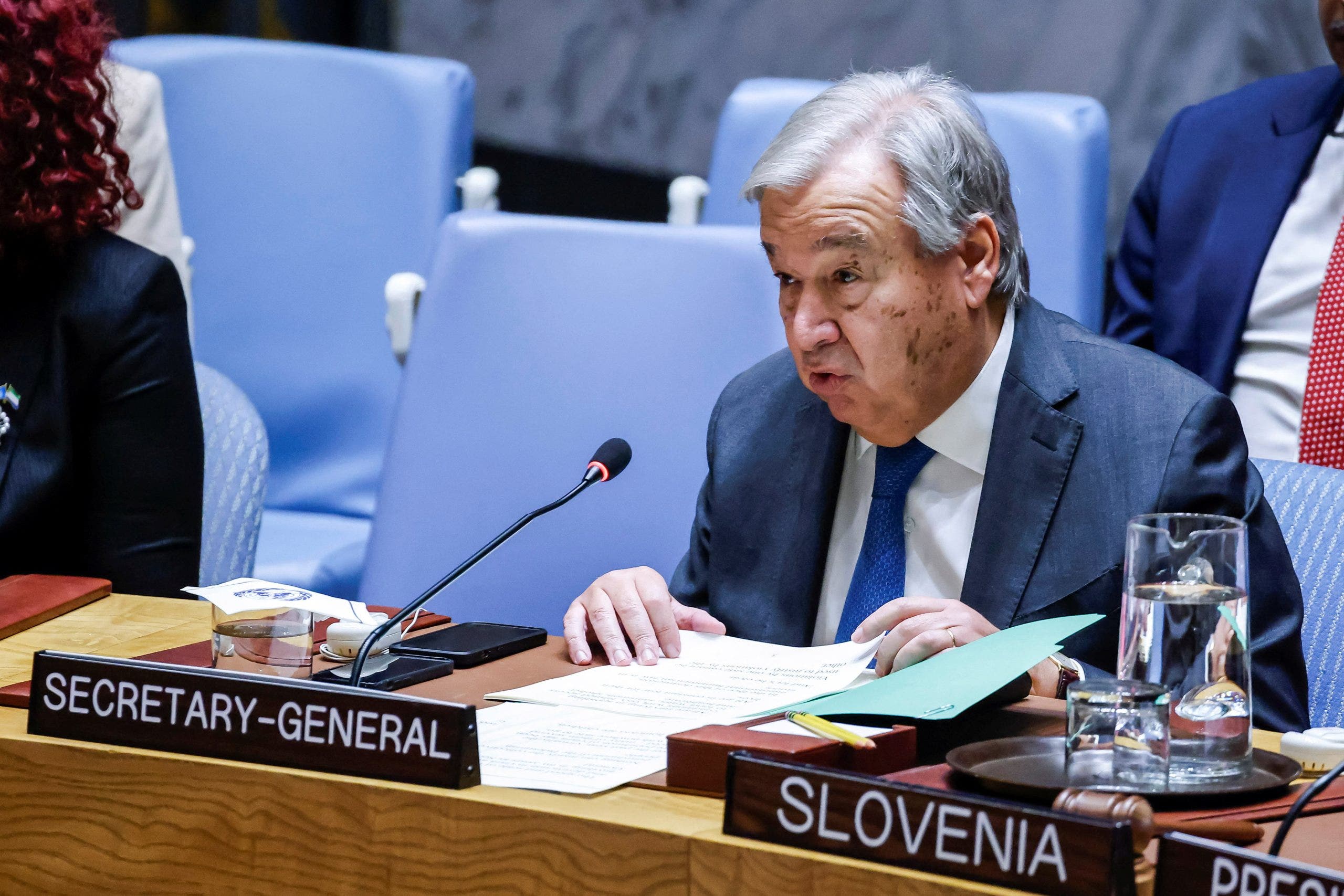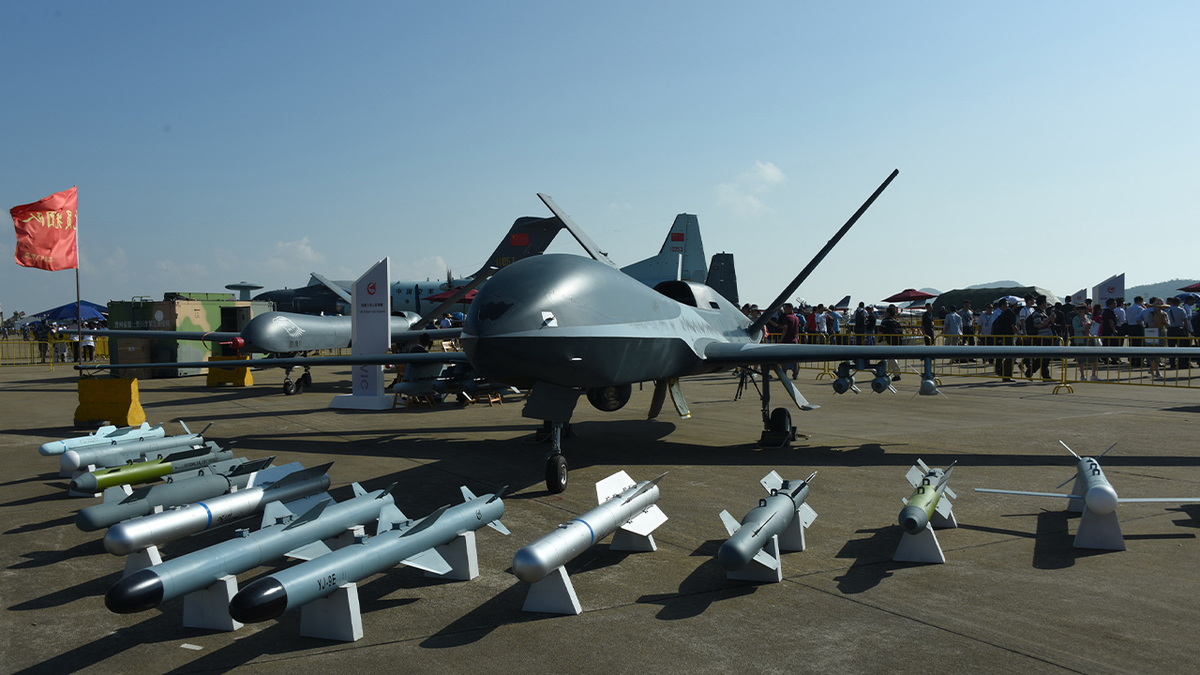World
EU platform to pool gas demand seeing ‘remarkable success’ – Brussels

Suppliers who took part in the first tender round offered more than 13.4 billion cubic metres (bcm) of gas, higher than the 11.4 bcm requested by buyers. But the price is not yet known.
The first tender process from the EU’s joint gas purchase platform has been a “remarkable success” with energy-vulnerable countries having nearly all of their needs met, the European Commission said on Tuesday.
Energy companies across the bloc and other participating countries — Ukraine, Moldova, Georgia, and Western Balkan states — had by last week put in bids of 11.6 billion cubic metres (bcm) on the AggregateEU platform.
Suppliers responded to the aggregate demand by offering a total volume of more than 13.4 bcm, Commission Vice-President for Interinstitutional Relations Maroš Šefčovič told reporters.
“This is nothing short of a remarkable success. It shows that we were right to pool our demand, to use Europe’s collective pulling power, and to work together to fill our gas storages for next winter,” he added.
The overall volume that has actually been matched to customer demands represents 10.9 bcm. About a fifth of this is for liquified natural gas (LNG), which is delivered by ships to terminals located primarily on the Iberian peninsula and on the North Sea, with the remaining 80% requested via pipeline.
Matching in the most vulnerable countries “is particularly positive,” Šefčovič said with requests by Bulgaria and Ukraine fully met while 80% of Moldova’s requested volumes have been matched.
Buying and selling companies will now start the negotiating process outside of the platform, with the first deliveries tabled for late June, early July. The Commission wouldn’t, however, comment on price, arguing it is not involved in the talks.
Prices for gas are currently hovering between €30-€35 per megawatt-hour, well below the record highs of over €300 per megawatt-hour observed over the summer, but nearly ten times higher than pre-pandemic levels.
“Of course, our overall goal here is that we do our utmost to make sure that people have adequate supplies of gas to prevent any shortages or any scarcity as we have seen it in the last year. And with this new instrument that we are bringing new players to the market, we believe that we are also contributing to the tendency which we see now on the gas market, which is clearly demonstrating that the prices are getting lower and they are more competitive for the European customers,” Šefčovič said in response to a Euronews question.
The EU official nonetheless said that despite the first tender round’s positive outcome, there was no time for complacency.
“We still have war raging on in Ukraine. We still have to remember hard lessons we learned the last year. We have to work to make sure that our energy security will be much stronger than the last year. And we cannot be satisfied with the level of energy prices across Europe.
“Our work continues and therefore we will proceed with further intensive outreach to all potential suppliers from all over the world to make sure they will be well prepared for the next winter. And we will secure adequate supplies of gas to make sure that our energy-intensive companies can benefit from better prices and they can start to get their production back to their pre-war levels, because we shouldn’t forget that still, because of the energy prices level, they are not performing at 100%,” he added.
There are currently 110 companies subscribed to the platform.
AggregateEU plans to launch four more rounds of tendering before the end of the year with the second one planned for the second half of June.

World
Early human ancestors used their hands to both climb trees and make tools, new study shows
WASHINGTON (AP) — Our hands can reveal a lot about how a person has lived – and that’s true for early human ancestors, too.
Different activities such as climbing, grasping or hammering place stress on different parts of our fingers. In response to repeated stress, our bones tend to thicken in those areas.
To study how ancient humans used their hands, scientists used 3D scanning to measure and analyze the bone thickness of fingers.
They focused on the fossil hands of two early human ancestor species recovered from excavations in southern Africa, called Australopithecus sediba and Homo naledi. The individuals lived around 2 million years ago and around 300,000 years ago, respectively.
Both ancient human species showed signs of simultaneously using their hands to move around – such as by climbing trees – as well as to grasp and manipulate objects, a requirement to being able to make tools.
“They were likely walking on two feet and using their hands to manipulate objects or tools, but also spent time climbing and hanging,” perhaps on trees or cliffs, said study co-author and paleoanthropologist Samar Syeda of the American Museum of Natural History.
The research was published Wednesday in Science Advances.
The findings show there wasn’t a simple “evolution in hand function where you start off with more ‘ape-like’ and end up more ‘human-like,’” said Smithsonian paleoanthropologist Rick Potts, who was not involved in the study.
Complete fossil hands are relatively rare, but the specimens used in the study gave an opportunity to understand the relative forces on each finger, said Chatham University paleontologist Erin Marie Williams-Hatala, who was not involved in the study.
“Hands are one of the primary ways we engage with world around us,” she said.
___
The Associated Press Health and Science Department receives support from the Howard Hughes Medical Institute’s Science and Educational Media Group and the Robert Wood Johnson Foundation. The AP is solely responsible for all content.
World
UN revisits 'killer robot' regulations as concerns about AI-controlled weapons grow

Several nations met at the United Nations (U.N.) on Monday to revisit a topic that the international body has been discussing for over a decade: the lack of regulations on lethal autonomous weapons systems (LAWS), often referred to as “killer robots.”
This latest round of talks comes as wars rage in Ukraine and Gaza.
While the meeting was held behind closed doors, U.N. Secretary-General António Guterres released a statement doubling down on his 2026 deadline for a legally binding solution to threats posed by LAWS.
“Machines that have the power and discretion to take human lives without human control are politically unacceptable, morally repugnant and should be banned by international law,” Guterres said in a statement. “We cannot delegate life-or-death decisions to machines,” he later added.
United Nations Secretary-General António Guterres speaks during a Security Council meeting during the 79th United Nations General Assembly at U.N. headquarters in New York City on Sept. 27, 2024. (Reuters/Eduardo Munoz)
FORMER TRUMP OFFICIAL SLAMS UN REFORM EFFORTS AS ‘EIGHT AND A HALF YEARS LATE’
International Committee of the Red Cross (ICRC) President Mirjana Spoljaric delivered a statement to nations participating in Monday’s meeting. Spoljaric expressed the ICRC’s support for efforts to regulate LAWS but warned that technology is evolving faster than regulations, making threats posed by the systems “more worrying.”
“Machines with the power and discretion to take lives without human involvement threaten to transform warfare in ways with grave humanitarian consequences. They also raise fundamental ethical and human rights concerns. All humanity will be affected,” Spoljaric said.

The picture shows the unmanned aerial vehicle of China captured at the Zhuhai Air Show on Nov. 7, 2018. (Costfoto/Future Publishing via Getty Images)
NUCLEAR WATCHDOG URGES ‘TRUST BUT VERIFY’ THAT IRAN ENGAGES IN GOOD-FAITH NEGOTIATIONS
Artificial intelligence is not necessarily a prerequisite for something to be considered an autonomous weapon, according to the U.N., as not all autonomous systems fully rely on AI. Some can use pre-programmed functions for certain tasks. However, AI “could further enable” autonomous weapons systems, the U.N. said.
Vice President of the Conservative Partnership Institute Rachel Bovard, however, says that while regulation of autonomous weapons is necessary, the U.S. needs to be cautious when it comes to the development of international law.
“AI is the wild west and every country is trying to determine the rules of the road. Some regulation will be imperative to preserving our humanity. When it comes to international law, however, the U.S. should proceed with caution,” Bovard told Fox News Digital. “As we have learned with everything from trade to health, subjecting our national sovereignty to international dictates can have lasting unintended consequences. If existing international law is sufficient at the moment, that is what should govern.”

Palestinian President Mahmoud Abbas addresses the 79th session of the United Nations General Assembly on Thursday, Sept. 26, 2024 at U.N. headquarters. (AP Photo/Frank Franklin II)
Countries in the Convention on Certain Conventional Weapons have been meeting since 2014 to discuss a possible full ban on LAWS that operate without human control and to regulate those with more human involvement, according to Reuters.
In 2023, more than 160 nations backed a U.N. resolution calling on countries across the globe to address the risks posed by LAWS. However, there is currently no international law specifically regulating LAWS.
World
Maldives parliament removes two Supreme Court judges

The Parliament of the Maldives has impeached two judges of the country’s Supreme Court, deepening a political crisis triggered by President Mohamed Muizzu’s push to amend the constitution and strip legislators of their seats if they switch political parties.
The Parliament, where the governing People’s National Congress holds a supermajority, voted on Wednesday to remove Justices Azmiralda Zahir and Mahaz Ali Zahir on allegations of abuse of power.
The vote, which passed 68 – 11, took place as dozens of opposition supporters rallied outside the Parliament House, calling for Muizzu’s resignation and an end to what they called the intimidation of judges.
The move comes more than two months after the judicial watchdog, dominated by Muizzu’s allies, suspended the two judges and their colleague, Justice Husnu al-Suood. At the time, the seven-member Supreme Court bench had been holding hearings into a petition challenging the anti-defection amendments.
Suood later resigned from the top court, accusing Muizzu and Attorney General Ahmed Usham of intimidating all the judges of the Supreme Court to secure a judgement in their favour.
The president and his lawyer deny the charges.
“I do not interfere with the judiciary,” Muizzu told reporters during a 14-hour news conference on May 3. “I have never done so. I do not control the [the judicial watchdog].”
The crisis has brought the Maldives’s Supreme Court to a near halt, pausing hearings in all ongoing cases, including on the constitutional amendments. It has also raised fears of renewed instability in the Indian Ocean honeymoon destination, which held its first multiparty elections in 2008, but has been roiled by political turmoil since, including a coup d’etat, disputed elections, and the killings and jailing of dissidents.
‘Attack on judiciary’
Azmiralda and Mahaz denounced their impeachment.
“This is an attack on the Maldivian judiciary. It is no ordinary matter to bring the Maldives Supreme Court to a halt,” Azmiralda said in a statement. “My hope is that one day, when the rule of law is established in this country … all of the various officials who took part in destroying the Supreme Court are held accountable.”
The case against the two judges stems from the arrest of Azmiralda’s husband, Ismail Latheef, during a police raid on a spa where he was receiving a massage in the Maldivian capital, Male, on December 4 of last year.
The incident happened two weeks after Muizzu ratified the anti-defection measures.
The controversial amendments stipulate that legislators elected on a political party ticket would lose their seat if they switch parties, or if they resign or are expelled from their party. The provisions effectively allow Muizzu to maintain his supermajority in Parliament, where his party controls 79 of the chamber’s 93 seats.
The president has argued they are necessary to “improve political stability”, but opponents say they would destroy the country’s system of checks and balances.
At the time of Latheef’s arrest, a former member of parliament had filed a petition at the Supreme Court challenging the legality of the amendments, but the bench had yet to decide to take up the case.
Latheef was held overnight for more than 12 hours, on charges of soliciting a prostitute, but was released by a judge at the Criminal Court. In the ruling, the judge noted that the masseuse treating Latheef was fully clothed at the time of the raid, and that the room they were in was unlocked.
The prosecutor’s office later shelved the case against Latheef, citing a lack of evidence.
But after the Supreme Court began reviewing the constitutional amendments in February, the watchdog Judicial Services Commission (JSC) took up a separate case against Azmiralda and Mahaz, claiming the two judges had unlawfully lobbied lower court judges to secure Latheef’s release.
The JSC recommended that the Parliament impeach them last month.
‘No ulterior motives’
The judges have denied the charges, with lawyers for Azmiralda saying that the case was “manufactured by top government officials to suspend” them “in order to influence the outcome of the constitutional case before the Supreme Court”.
Usham, the Attorney General, has told Al Jazeera that the government “categorically denies these allegations”.
“There is absolutely no truth to the claim that the executive branch had any hand in the JSC’s [the judicial watchdog’s] decision,” he wrote in an email. “The suspension was pursuant to law and… any suggestion of ulterior motives is firmly rejected by the Government.”
The case, however, has drawn criticism from the United Nations and rights groups.
Margaret Satterthwaite, the UN’s special rapporteur on the independence of judges and lawyers, expressed grave concern last month over the action against the three judges, saying they appear to be aimed at undermining the Supreme Court’s judicial review of the anti-defection measures.
“The disciplinary proceedings brought against three of the Supreme Court’s Justices appear to violate the principle that judges can only be dismissed on serious grounds of misconduct or incompetence and in accordance with fair procedures guaranteeing objectivity and impartiality as provided for by the Constitution or the law,” she wrote. “The pressure of suspensions, disciplinary proceedings and investigations may amount to an interference in the independence of this institution.”
-

 Austin, TX4 days ago
Austin, TX4 days agoBest Austin Salads – 15 Food Places For Good Greens!
-

 Education1 week ago
Education1 week agoIn Alabama Commencement Speech, Trump Mixes In the Political
-

 Technology1 week ago
Technology1 week agoBe careful what you read about an Elden Ring movie
-

 Culture1 week ago
Culture1 week agoPulitzer Prizes 2025: A Guide to the Winning Books and Finalists
-

 Technology6 days ago
Technology6 days agoNetflix is removing Black Mirror: Bandersnatch
-

 Education1 week ago
Education1 week agoUniversity of Michigan President, Santa Ono, Set to Lead University of Florida
-

 World6 days ago
World6 days agoThe Take: Can India and Pakistan avoid a fourth war over Kashmir?
-

 News6 days ago
News6 days agoReincarnated by A.I., Arizona Man Forgives His Killer at Sentencing



















